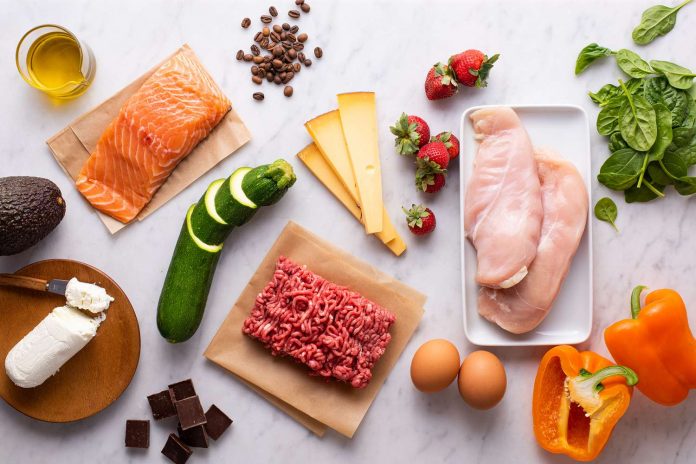Cleanliness and food preparation precautions are the best defense against infection
Millions of meals served around the world every year offer an unwanted extra — salmonella, a nasty bacteria that can lead to an unpleasant (and sometimes even deadly) form of food poisoning.
The good news? Avoiding the illness and resulting days of gastric distress often comes down to taking just a few simple precautions.
Infectious disease specialist Frank Esper, MD, has tips to add a dash of safety to your diet.
What is salmonella?
Salmonella is a type of bacteria that can live and thrive in the digestive tract of people and animals. It exits a body by … well, hitching a ride in poop. (That kind of makes it easier to understand why it’s so upsetting to your tummy, huh?)
Food is the main source of salmonella infections. You can pick it up by:
Eating raw or undercooked foods contaminated with animal feces. A good chunk of the grocery store could serve as a source. Salmonella could be on beef, pork, chicken or seafood. It has also been linked to milk and eggs. Ditto for fruits and vegetables.
Eating food prepared on a contaminated surface. The most common cause here would be raw meat leaving salmonella on a cutting board or countertop.
Eating food contaminated with human feces. If someone preparing food doesn’t wash their hands, salmonella could be the result.
Eating food contaminated with salmonella may give you stomach cramps, severe diarrhea and vomiting that lasts four to seven days, says Dr. Esper. An estimated 26,500 people a year are hospitalized due to salmonella.
In severe cases, salmonella can get into your bloodstream, damage organs and cause death.
Can salmonella be prevented?
Your risk of salmonella poisoning is minimal if you take the necessary precautions to ensure your food is properly prepared and stored.
The U.S. Centers for Disease Control and Prevention (CDC) recommends these precautions, broken into four steps.
Cleanliness. Scrub your hands for 20 seconds before, during and after meal prep. Wash utensils and cutting boards with hot, soapy water after preparing each food item. Rinse fresh fruits and veggies under running water.
Beware cross-contamination. Raw meat, poultry, seafood and eggs can spread bacteria to other foods. Keep them separate from ready-to-eat foods at all times.
Cook to the right temperature. Germs in or on food die during the cooking process IF internal temperatures get high enough. That’s 145 degrees Fahrenheit (62.77 degrees Celsius) for whole cuts of beef, veal, lamb and pork; 160 F (71.11 C) for ground meats; and 165 F (73.88 C) for poultry.
Chilling. Make sure your refrigerator’s temperature is below 40 F (4.44 C). Refrigerate perishable food within two hours … and make it one hour if it’s exposed to warm conditions like at a summer picnic or sitting in a hit car.
Also, people who have salmonella shouldn’t prepare food or pour water for others until their symptoms resolve and they have a negative follow-up test.
It’s important to remember that contamination can happen at any stage of food production, from farm to store. And you can’t exactly tell when something’s contaminated because salmonella doesn’t affect the taste, smell or appearance of food.
“That’s why it’s important to always practice safe food preparation practices,” notes Dr. Esper.
Contact with pets and animals
While food is the most common cause of salmonella infections, the bacteria can also be transferred when you touch an animal. (Basically, think of how animals enjoy rolling on the ground … and then think of what they might be rolling in.)
Turtles, snakes, lizards and baby birds are also more likely to carry salmonella. In early 2022, the CDC reported a salmonella outbreak linked to pet bearded dragons.
To stay safe, always wash your hands after touching pets or other animals. The same advice applies when you handle toys or bedding used by animals. It’s best not to smooch animals, either.
Salmonella outbreaks
If two or more people come down with a stomach-churning case of salmonella that’s linked to the same contaminated food, drink or animals, it’s classified as an outbreak and investigated by the CDC.
In recent years, outbreaks have been connected to food products ranging from salami sticks to onions to ground turkey.
Zoonotic outbreaks have been tied to backyard poultry, pet hedgehogs and wild songbirds.
Be on the lookout for salmonella outbreak announcements, which are typically widely reported, to ensure you don’t have contaminated products. Many salmonella outbreaks lead to food recalls.
Is it salmonella or stomach flu?
It’s not always obvious when someone has salmonella poisoning, as common symptoms — vomiting, diarrhea, fever and chills — closely resemble those of stomach bugs.
The main difference? “People with salmonella tend to just be sicker,” says Dr. Esper.
Your poop may offer a more definitive clue if you take a peek in the toilet. Blood and mucous may be visible in your stool if you have salmonella. The stomach flu, meanwhile, often leads to more water diarrhea.
In most cases, your body doesn’t actually need antibiotics to fight salmonella, Dr. Esper says.
But if you’re younger than 5 (especially babies under 3 months of age), older than 65 or have a weakened immune system, salmonella may put you at higher risk for complications. Dehydration also can become an issue if you’re unable to keep down any fluids.
“We certainly recommend that everyone who thinks they might have salmonella poisoning at least talk to a medical professional and let us know what’s going on, even if they don’t need to be seen,” Dr. Esper advises.
Most likely, however, you’ll just need some good old rest and plenty of hydration. A review of tips to avoid salmonella might not be a bad idea, too.

























